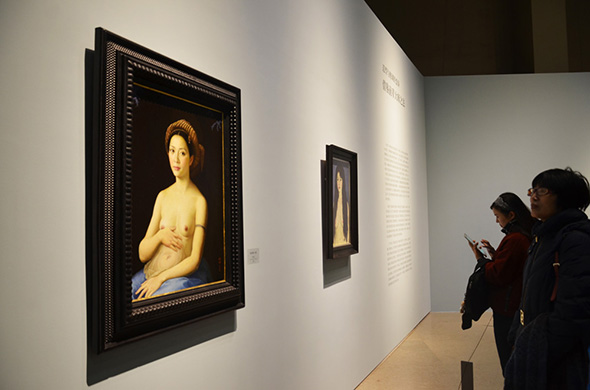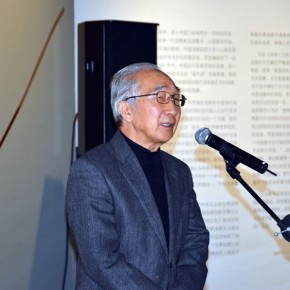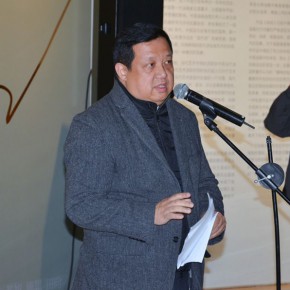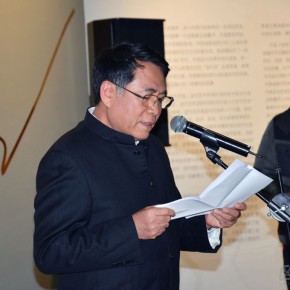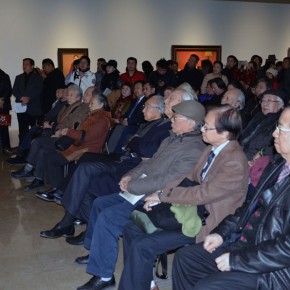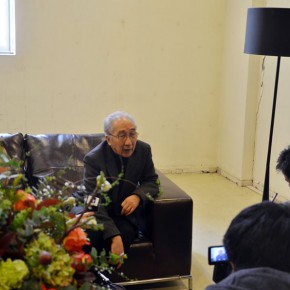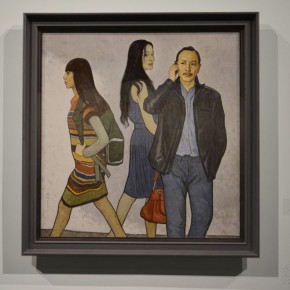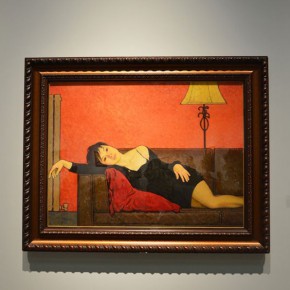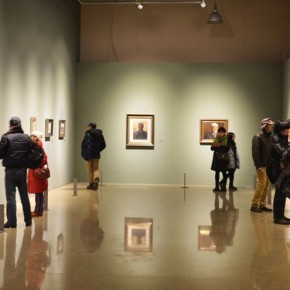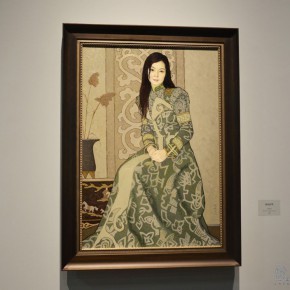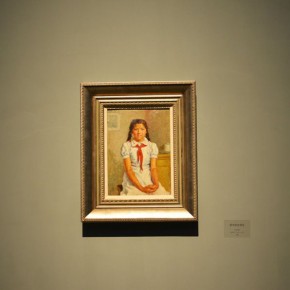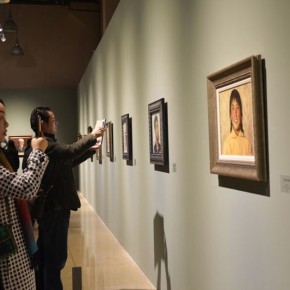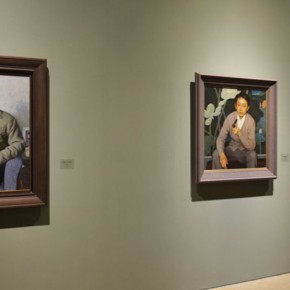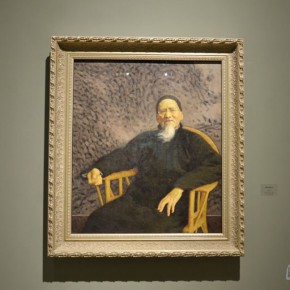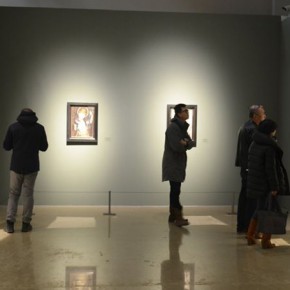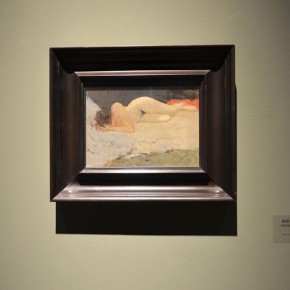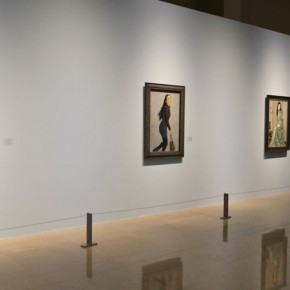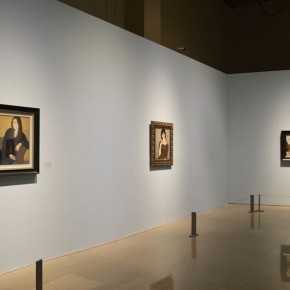“Ishvara” originates from a Buddhist term, to describe a kind of mental state; “course” is both a road, and a method. While “unrestrained course” refers to the act of skillfully handling a butcher’s cleaver in his path to development and the method used, which represents the state of Jin Shangyi, and also summarizes the sixty years of artistic creation and study on oil painting language.
- Curator Yu Ding
On December 3, 2015, “Unrestrained Course – Research Exhibition on Jin Shangyi’s Oil Painting Language” opened at Chinese Academy of Oil Painting. The exhibition comprehensively presents the exploration and thinking of oil painting art by Jin Shangyi during various stages since the 1950s and it is the first comprehensive exhibition reviewing Jin Shangyi’s technical ability, exploring the research process of oil painting language. Jin Shangyi is a leader of the creation, teaching and technical ability in Chinese art circles, so his strong appeal brought together old, middle-aged and young artists, including Zhan Jianjun, Wen Lipeng, Pan Shixun who attended the opening ceremony.
Retrospect the Past while Carrying on with the Energy
The exhibition showcases 77 oil paintings in the form of flashback, and it is divided into five chapters, to render the basic problems of painting studied by Jin Shangyi during different periods: the first chapter “Movement of the Line and Color: on the Road to Modernism”; the second chapter “Variation of the Shape and Style: Reference to the Predecessor’s Method”; the third chapter “Symphony of Chinese and Western Paintings: Study of the Way of Transmission by Copying”; the fourth chapter is the “Chorus of Language and Skill: Expanding the Road of Oil Painting Creation”; the fifth chapter is “Cycle of Reality and Image: Sketch Knocks on the Door of Art”.
It is worth mentioning that the exhibition also presents 13 new works created by Jin Shangyi since 2006, including “On the Way” and “Mongolian Princess” created in 2015. After Jin Shangyi proposed the viewpoint that “It’s necessary to fill up Chinese art with modernism”, he created experiments in the fusion of traditional Chinese art and the line, color and shape in modern art and created a series of new works. In addition, it also presents Jin Shangyi’s early sketches, copying works which have never been exhibited before, such as the seven rarely seen facsimiles of Dunhuang mural painting, which witnesses Jin Shangyi who explored the color and shape of oil painting, and the trial in the fusion of traditional Chinese art.
Yang Feiyun addressed the opening ceremony and said Jin Shangyi experienced the periods from the founding of new China, to economic development and the transformation period of cultural change, it was also the time when the new China had an all-round and rapid development in its economy, culture and concept, during which society was lost, wandering, restless and even deformed, while Jin Shangyi had always secured a firm foothold in art, soberly grasping reality, rather than being confused by the phenomenon and impressed by the trend of the times.
Unrestrained in the mind, Freedom on the way
At the opening ceremony, Yu Ding, curator of the exhibition, Dean of the Institute of Arts Administration and Education, CAFA summarized Jin Shangyi’s methodology of oil painting language, “firstly, sketch, secondly, copy, thirdly, creation. The three aspects became the three approaches of Jin to study the language of oil painting, which is the same throughout the 60 years of his art career.” Finally, Yu Ding interpreted the theme of the exhibition “Unrestrained Course”, which referred to the realm of skillfully handling a butcher’s cleaver in his path to development and method. Yu Ding used the English sentence “Freedom in the mind, Freedom on the way” to summarize the extended meaning, “Freedom in the mind, Freedom on the way” is desired and pursued by each artist.
Exploration of Oil Painting for more than 60 Years
Jin Shangyi who is 80 years old, recalled the experiences of learning oil painting over the decades at the opening ceremony, and he said that, as an oil painter, his core problem of research was the basic language of oil painting, and it was the place where his creation was continuously explored during his life.
Jin Shangyi was admitted to study in CAFA in the 1950s, accepted the realistic painting skills from the former Soviet Union taught by the domestic teachers and the oil painter Maximov from the Soviet Union, and then constantly groped with the shape and color of oil painting in the following years of creation and teaching; after he visited the European classical paintings in 1978, he explored the classical portrait creation, leading to regression and the development of classical oil painting language, which had a significant impact on the development of contemporary academic art; from the 1990s, he has started to study the fusion of the composition and elements of Chinese traditional painting and the language of oil painting, the interactive development between the art of oil painting and contemporary conceptual art, experimenting with the language of modernistic oil painting, etc., and had a specific and detailed answer through his own painting practice. Jin Shangyi makes a persistent exploration and experiment in the artistic language of oil painting.
“Unrestrained Course– Research Exhibition on Jin Shangyi’s Oil Painting Language” clearly presents Jin Shangyi’s learning method and developmental context, at the same time, it also showcases the learning style that focuses on “learning from nature and ancient people” at the same time. The exhibition is part of the Chinese Academy of Oil Painting’s oil painter research series, Dean of the Chinese Academy of Oil Painting Yang Feiyun, who is committed to planning “Artist Case Study Series Exhibition” writes in the preface that, “I believe that the exhibition is able to effectively showcase Jin’s academic achievements so inspiring newcomers, beneficial to promote the progress of Chinese oil painting.”
The exhibition continues to January 3, 2016.
Text and photo by Lin Jiabin, translated by Chen Peihua and edited by Sue/CAFA ART INFO.


